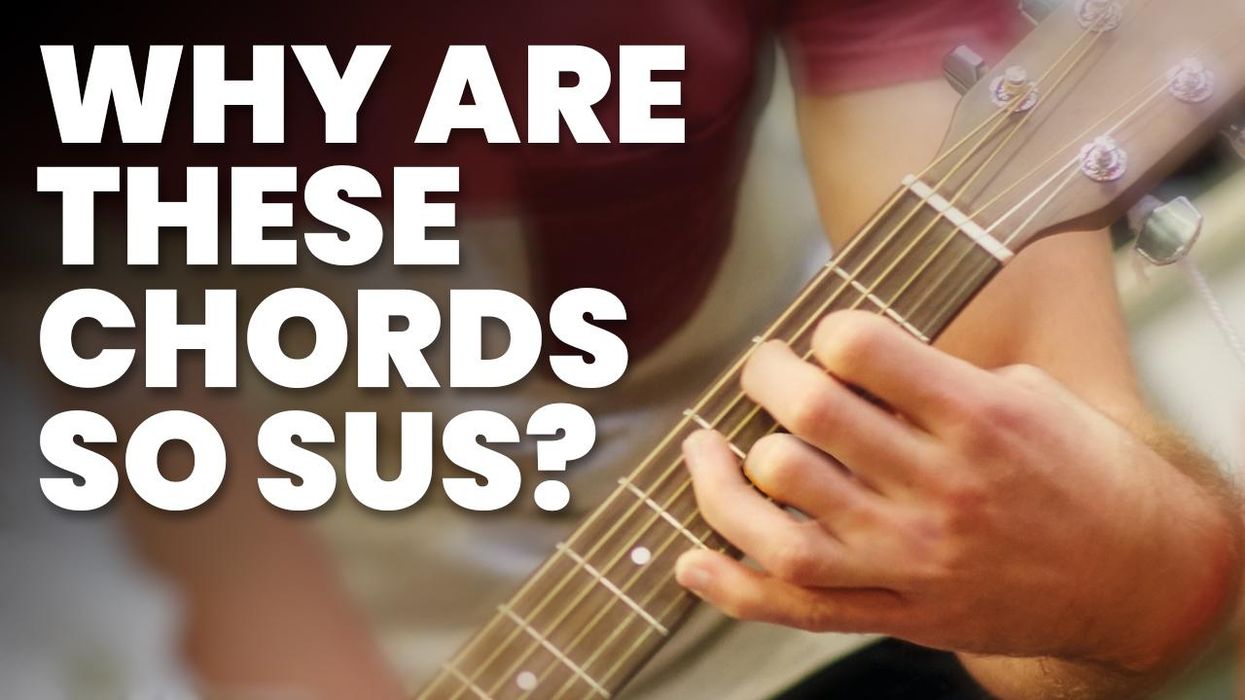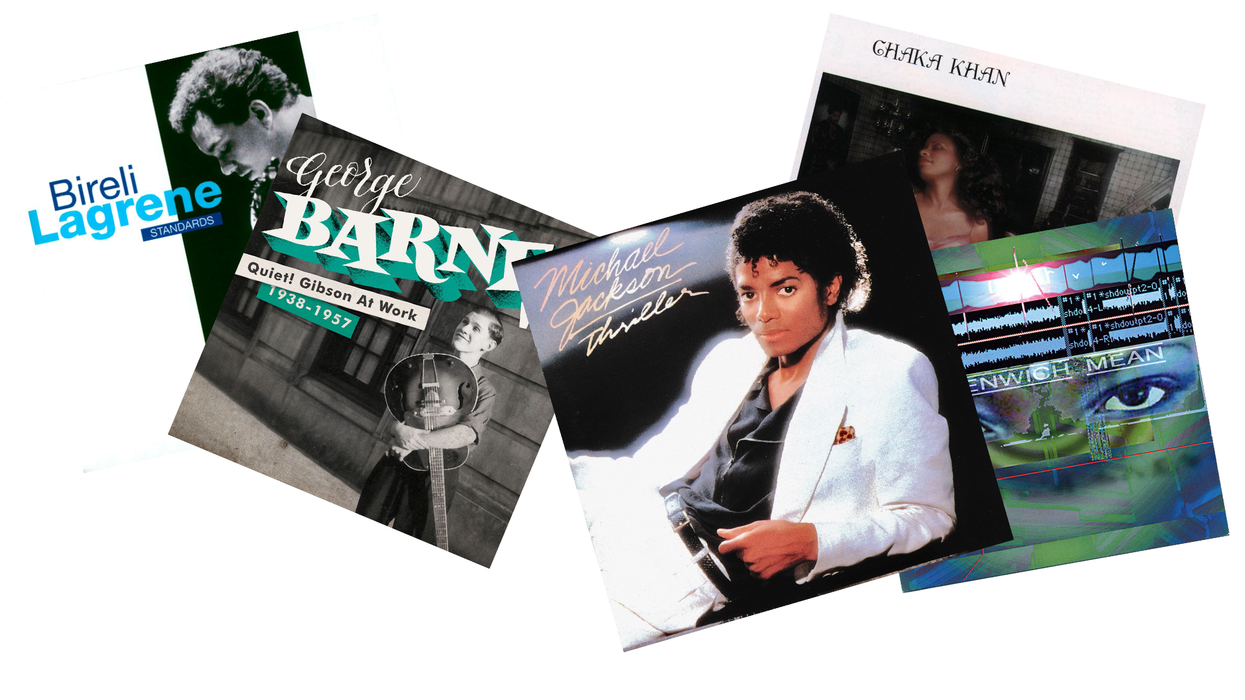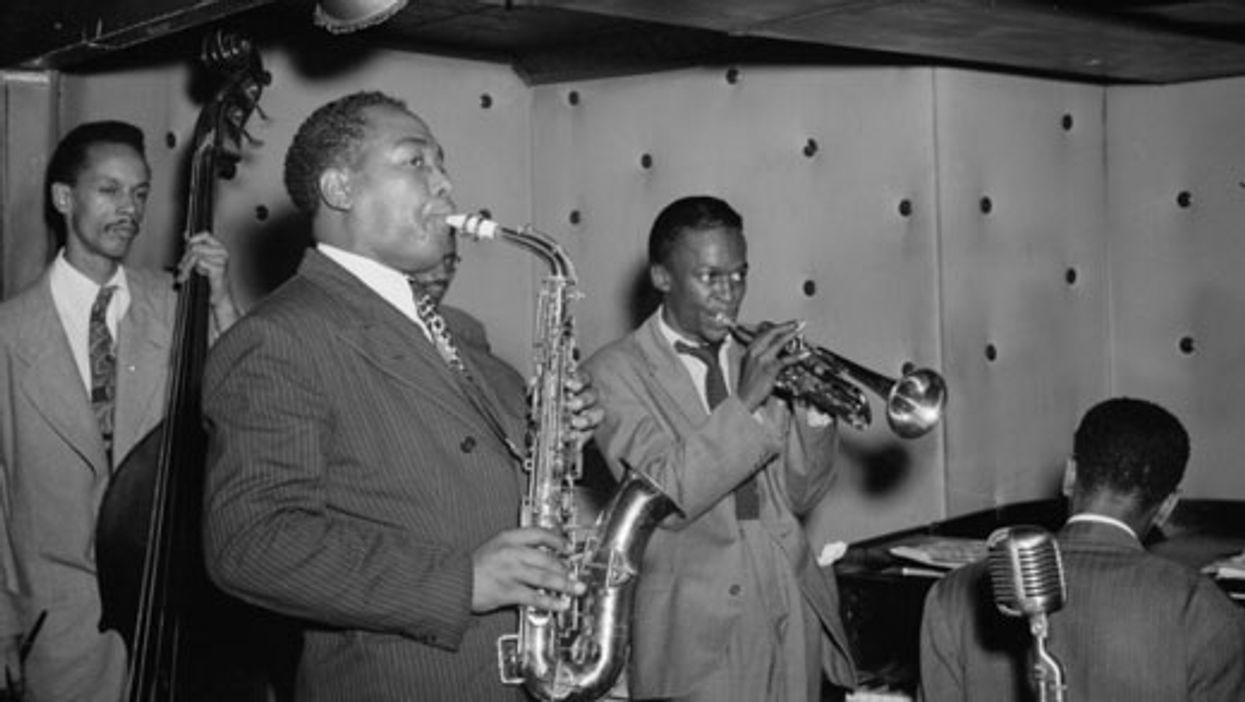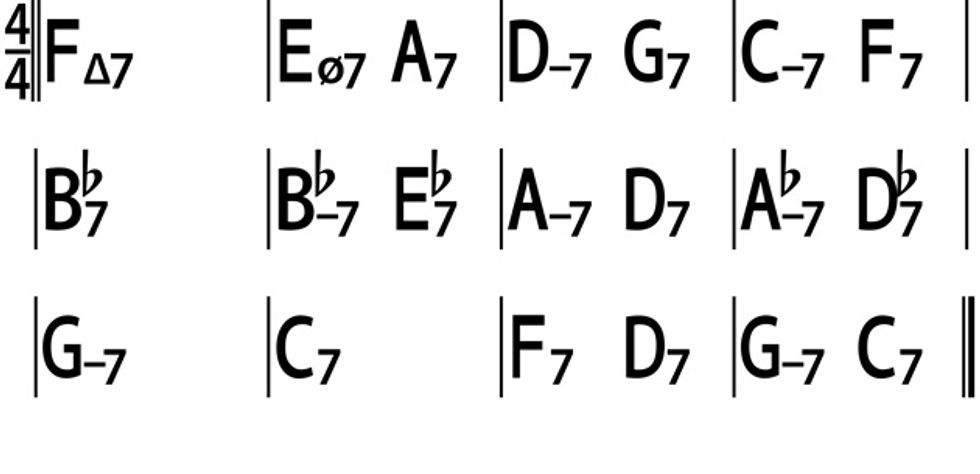A quick online search will uncover an overwhelming amount of information about Martino’s amazing bebop lines, concepts such as the minor conversion technique, his “The Nature of Guitar” writings, and transcriptions of his solos. I decided to take a slightly different view for this lesson. Throughout his career, Pat used a wealth of exciting repetitive motives that was as much a part of his signature sound as other more melodic and harmonic devices. These motives intensified the drama in many of his solos, kept audiences on the edge of their seats (check out the cheering at the 3:04 mark after one such example during his “Oleo” solo on Live at Yoshi’s), and the repetitive and rhythmic nature of these ideas was the perfect complement to his monstrous eighth-note lines.
Oleo (Live From Yoshi's, Oakland, U.S.A./2001)
When studying the masters, I don’t like to just learn licks. I find great importance in examining the theory and mechanics behind each idea to understand the language and assimilate the concept. The first idea (Ex. 1) can be found in many of Martino’s solos (check out “Mr. P.C.” on Pat Martino Trio Young Guns (1968/1969), but I found it when transcribing his other-worldly “Just Friends” solo on El Hombre (1967). The C# is optional as Pat sometimes plays this note as part of the idea and sometimes it is omitted.
Ex. 1
Ex. 1 can be viewed as an Fmaj7(#5) arpeggio built on the root, but we could also consider it as a DmMaj9 arpeggio built on the b3, a Bmin9(b5) arpeggio built on the b5 and also a G13(#11) arpeggio built on the b7. If we dig deeper we discover that all of these arpeggios/chords are based out of the D melodic minor scale (D–E–F–G–A–B–C#). In fact, Ex. 1, played over G13(#11), comes from the 4th mode of D melodic minor. This mode is also referred to as G Lydian dominant or G Mixolydian #4 (Ex. 2).
Ex. 2

The motive works beautifully over G13(#11) as it outlines the upper extensions: 13, #11, 9, and b7. Knowing that this idea comes from D melodic minor, we can experiment with superimposing the idea of other harmony from this scale. It can be used over a variety of chords like DmMaj7, C#7 alt., Bm9(b5), and Fmaj7#5.
If we take this idea one step further, we can apply it to the most prominent progression in jazz, the IIm-V7-I. Ex. 3 show this idea over a slightly modified progression in C major. Here we are starting each phrase on a specific chord tone or extension. For the II chord, start on the 9, the V7 chord start on the #9 (or b3) and for the I chord start on the 7.
Ex. 3
With a few slight position shifts, we can use that same phrase over a II-V-I in C minor (Ex. 4). Similar to the above example, we start on the 11 of the II chord, the #9 of the V chord, and the 9 of the I chord.
Ex. 4
We can also practice this idea over a 12-bar blues. Ex. 5 shows one possibility when superimposing this idea over a Bb jazz-blues progression.
Ex. 5
Martino also uses a variation of this idea to create a 3-over-4 rhythmic pattern (Ex. 6). Here, we are taking a six-note pattern and playing it over an eighth-note line. The effect builds tension before repeating every three measures.
Ex. 6
That’s a lot of information to digest, but the time spent will be worth the effort as it is a great motive that you can incorporate into your playing rather quickly.
The next motive (Ex. 7) is based on an Em7 arpeggio (E–G–B–D) and is played during the “Strings” solo on his record, Strings (1967).
Ex. 7
Pat Martino - Strings!
I previously mentioned the rhythmic nature of Martino’s repetitive ideas. This motive illuminates his penchant for ideas that create a 3-over-4 feel. Coupled with repetition, this concept can generate loads of rhythmic intensity. As you will see, he employs this device often. Dig the super-hip rotation between Em7 and EmMaj7 arpeggios, marked by the alternating D and D# top pitches. He plays this idea over A7, but it creates a toggling effect between A7 and A7(#11) which is more harmonically interesting. Bonus: This idea can also be played over Em7.
Ex. 8 is a variation that comes from the “Sunny” solo on Live! (1972). The Am7 arpeggio works so well over this entire progression. This example is somewhat unique as these repetitive ideas generally don’t include space. The idea incorporates an eighth-note rest to create the 3-over-4 sound once again. The phrasing, which includes a pull-off at the top of the arpeggio, demonstrates how articulation can also generate interest.
Sunny (Live / New York, NY / 1972)
Ex. 8
Although the Gm7 arpeggio doesn’t necessarily “fit” chords such as Am7 and D7b9, the strength of the repetition makes it work. This is similar to the concept of a minor blues scale working over the entire 12-bar blues progression. The hammer-on articulation at the bottom of the arpeggio as well as the short, accented top not really makes this idea pop.
Ex. 9
Ex. 10 is another uber-hip idea taken from the “Strings” solo. This is a six-note repeating motive with the 3-over-4 rhythmic grouping. The b3 and b5 “blue notes” contribute heavily to the sound, and this motive works wonderfully over the A7 chord. I’m not sure about Pat’s picking motion, so I supplied what I feel is comfortable. The slide going from the C to C# creates a slippery feel.
Ex. 10
Ex. 11 (again from “Strings”) exemplifies one of the most effective repetitive patterns in his playing. It consists of a 3-note pattern based on the minor 3rd interval. I love the way Pat toggles between picking each note and hammering-on the bottom two notes. The top pitch (C) is the #9 of A7, exuding a bluesy flavor.
Ex. 11
In Ex. 12 Martino plays the identical pattern during “Strings” with the root (A) as the top pitch.
Ex. 12
Ex. 13 occurs during the “Just Friends” solo, and rather than 16th-notes, he employs triplets over a IIm7–V7–IIIm7–VI7 progression in the key of F.
Ex. 13
There’s a very similar pattern during the “Oleo” solo on Live at Yoshi’s (2001). Ex. 14 is based on the interval of a minor sixth giving it a more vertical spread. The previous examples repeated every three beats, but this one repeats every three measures. This is slick, as Martino is outlining the upper extensions—the 13 (A) and 11 (F)—to give some harmonic color. You could easily adjust to use the 5 (C) and b3 (Eb), which he actually shifts to during the solo.
Ex. 14
Martino would often use open strings against moving fretted notes. It’s kind of funny. I first learned this idea as a teenager from Iron Maiden’s “Wasted Years” and AC/DC’s “Thunderstruck.” Martino was doing this in the 1960s, so I’m confident his influence crossed genres!
Ex. 15 comes from his “Mac Tough” solo on Live at Yoshi’s. Again a three-note pattern is utilized to create rhythmic interest.
Ex. 15
The final motive (Ex. 16) is what I describe as a Chromatic Melodic Connector. This idea has no harmonic implications, meaning it works in any harmonic situation, and is literally just a way to get from point A to point B. This specific example is from the song “Lazy Bird” on East! (1968) and it consists of three notes with the intervallic structure of two whole steps. Notice the accents on every third note. This reinforces the 3-over-4 motive and creates rhythmic intensity. The ascending and descending nature of the idea also builds excitement.
Pat Martino - Lazy Bird
Ex. 16
There are many more examples not discussed in this article, however, I hope this sheds some inspiring light on the more rhythmic and motivic side of Pat Martino’s playing.


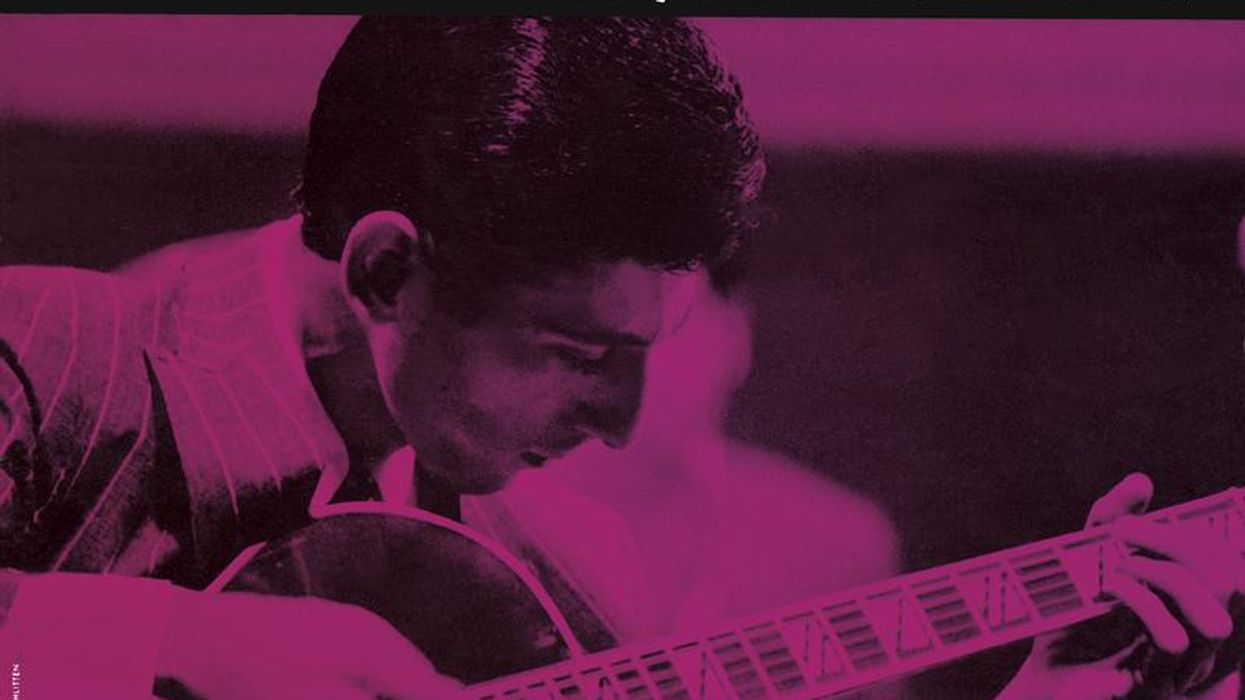



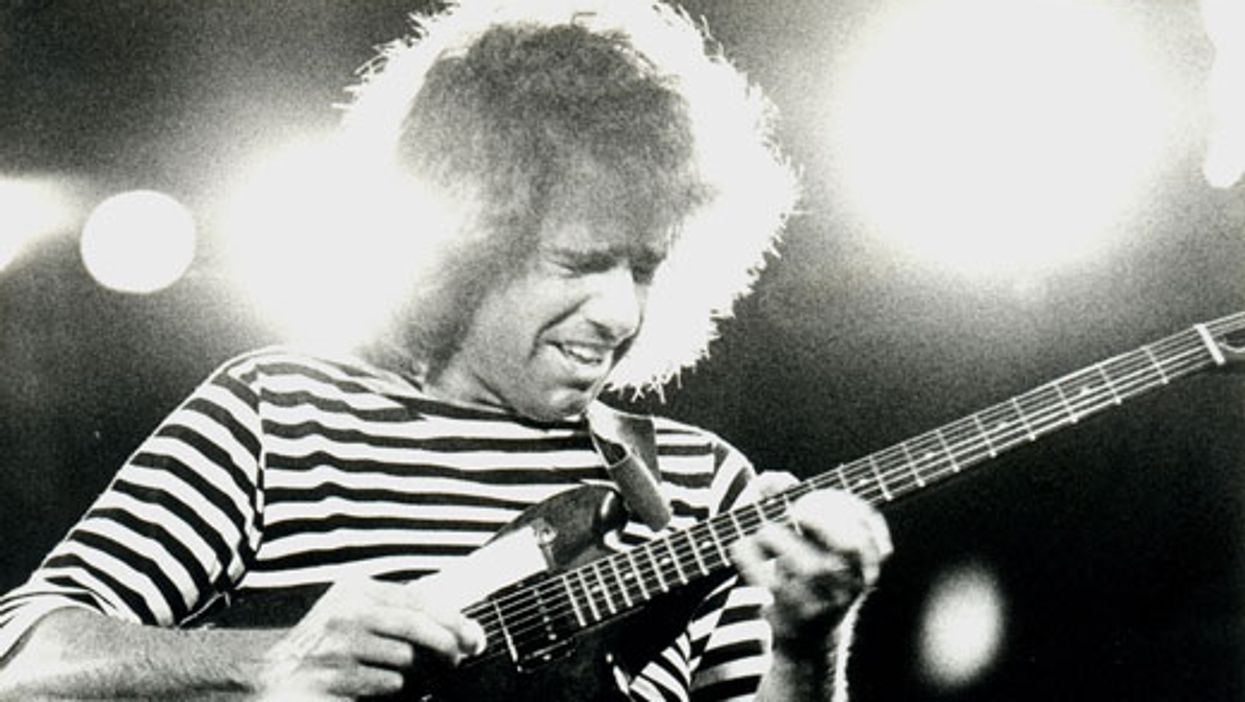
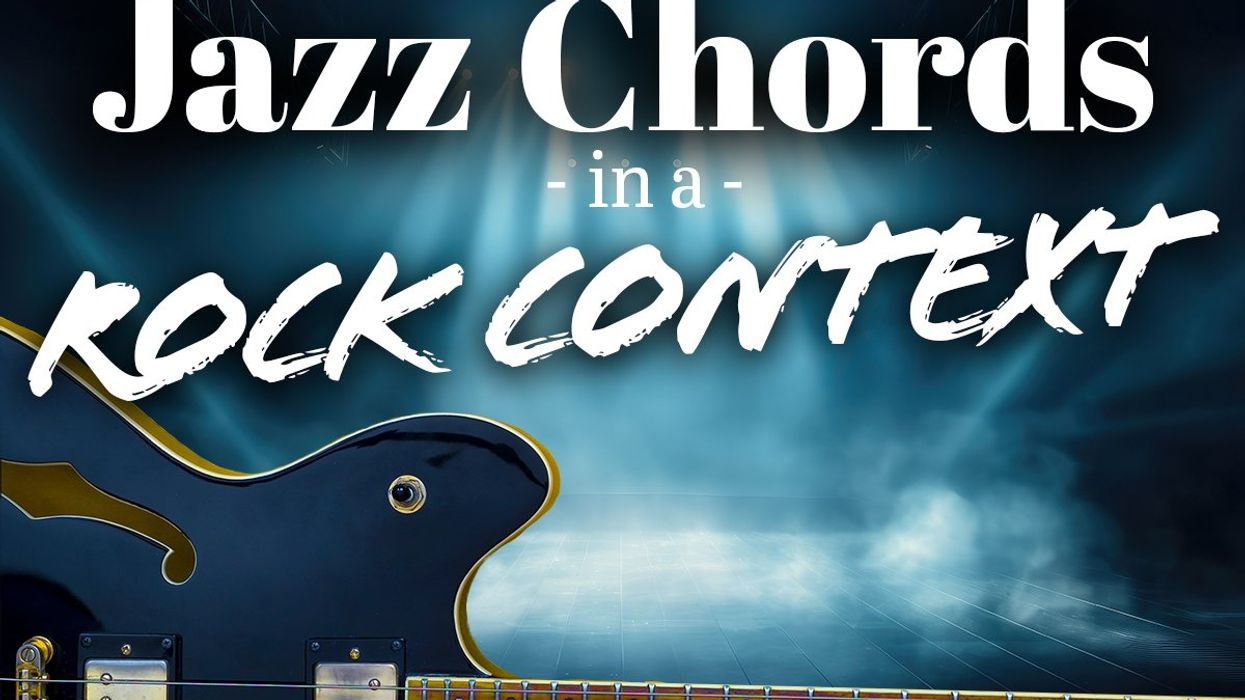



![Rig Rundown: Russian Circles’ Mike Sullivan [2025]](https://www.premierguitar.com/media-library/youtube.jpg?id=62303631&width=1245&height=700&quality=70&coordinates=0%2C0%2C0%2C0)


